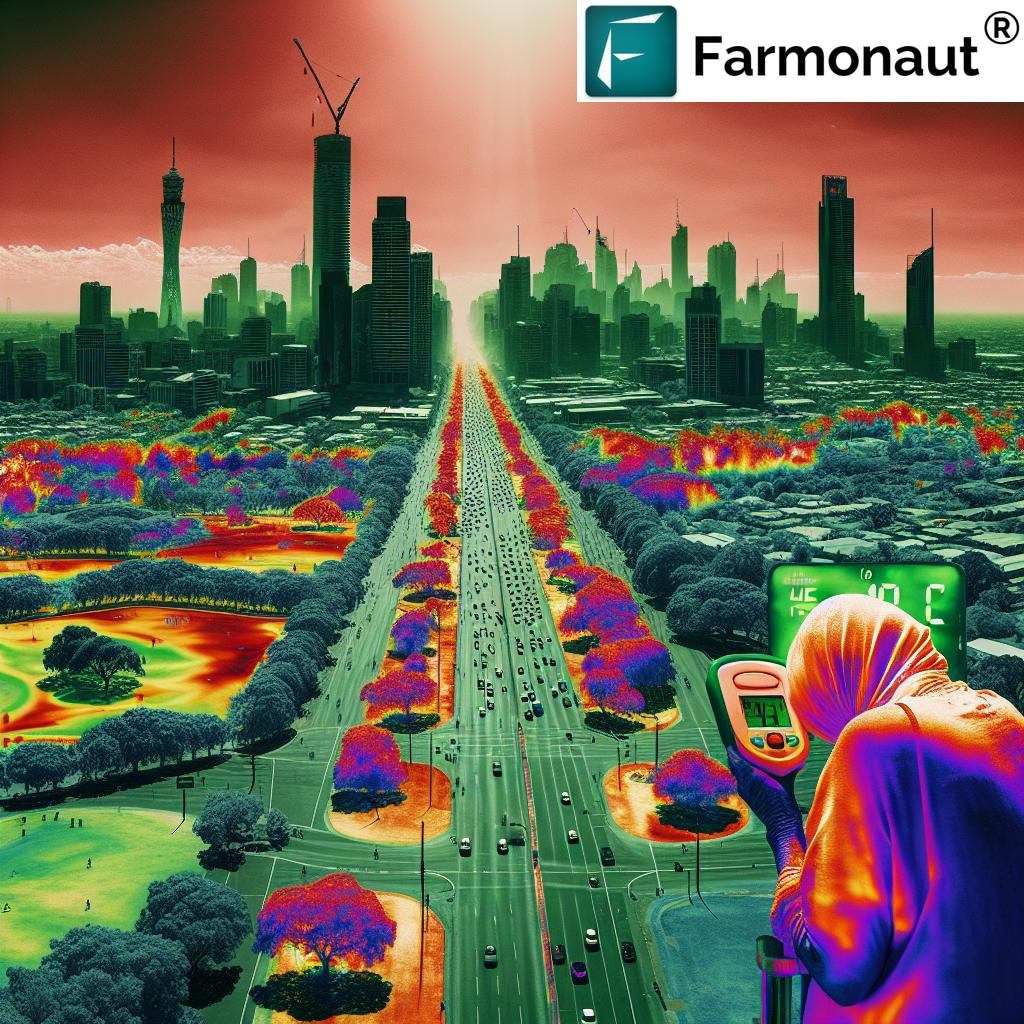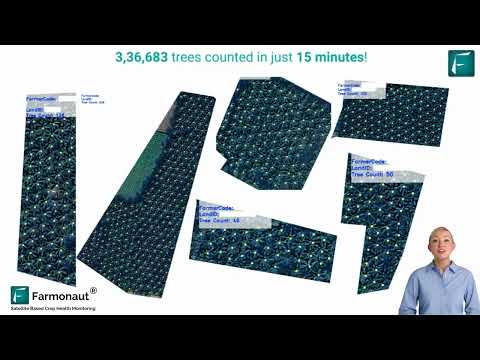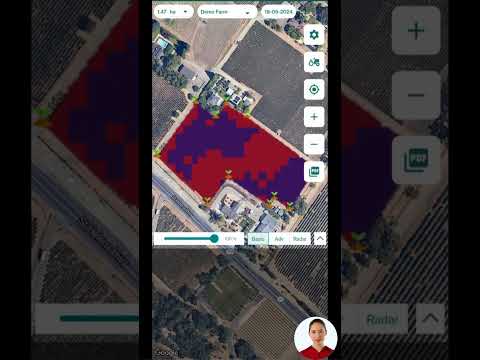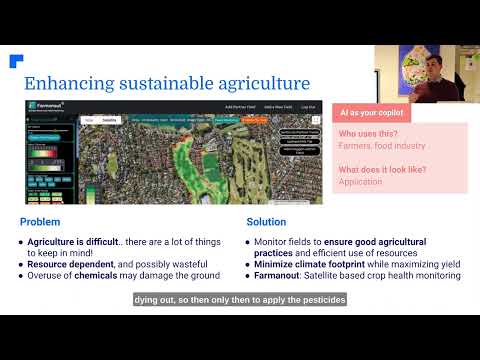Climate Change Fuels Deadly Heatwaves: Australian Cities Face Increased Mortality Risk
“Australian cities face up to 50% higher mortality risk during heatwaves due to the urban heat island effect.”
In recent years, we’ve witnessed the alarming intensification of climate change impacts across the globe. One of the most pressing concerns is the surge in deadly heatwaves, particularly affecting urban areas. As researchers and environmental experts, we’re deeply concerned about the escalating threat these extreme heat events pose to public health, especially in Australian cities. Today, we’ll delve into groundbreaking studies that shed light on the dire consequences of climate change-fueled heatwaves and explore strategies to mitigate their effects.
The Rising Threat of Heatwaves in Australia
Human-induced climate change has dramatically increased the frequency and severity of heatwaves, with urban dwellers facing a significantly higher risk of mortality. Two recent studies from the University of Queensland (UQ) have meticulously examined the mortality burden of heatwaves in Australia, revealing startling insights into the impact of extreme temperatures on public health.
These studies underscore the urgent need for action to address climate change health risks and protect vulnerable populations from the deadly effects of extreme heat events. As we navigate this critical issue, it’s essential to understand the complex interplay between climate change, urban environments, and human health.

Analyzing the 2009 Southeastern Australia Heatwave
The first study, a collaboration between UQ and The Australian National University (ANU), focused on a severe heatwave that struck southeastern Australia in 2009. This event provided a stark example of the devastating impact of extreme heat on human life. Let’s examine the key findings:
- Melbourne recorded its highest-ever temperature of 46.4 degrees Celsius during the heatwave.
- Parts of Victoria experienced 12 consecutive days with temperatures exceeding 40 degrees Celsius.
- An estimated 374 excess deaths occurred in Victoria during the five-day peak of the heatwave.
- Climate change increased heatwave-related mortality during this event by a staggering 20%.
These numbers are not just statistics; they represent real lives lost and families devastated by the impacts of extreme heat. The study’s findings highlight the urgent need for improved heatwave preparedness strategies and climate adaptation measures to protect vulnerable populations.
Identifying Vulnerable Populations in Australian Cities
The second study analyzed two decades of data to determine which areas of Australia are most vulnerable to heatwaves. The results paint a concerning picture of inequality in the face of climate change:
- City dwellers with low income and limited education are at the highest risk of heatwave-related deaths.
- People with diabetes and limited access to health services face increased vulnerability.
- Urban areas are particularly susceptible due to the urban heat island effect.
Patrick Amoatey, a UQ doctoral candidate and co-author of the study, attributed the higher risk in cities to the abundance of heat-absorbing surfaces such as roads, buildings, and railway lines. This urban heat island effect can significantly amplify temperatures in city centers compared to surrounding rural areas.
The Urban Heat Island Effect: A Growing Concern
The urban heat island effect is a phenomenon where cities experience significantly higher temperatures than their rural surroundings. This effect is particularly pronounced during heatwaves and can have severe consequences for urban residents. Several factors contribute to this issue:
- Dark surfaces like asphalt roads and roofs absorb and retain heat.
- Tall buildings create “urban canyons” that trap hot air.
- Reduced vegetation in cities limits natural cooling through evapotranspiration.
- Heat generated by vehicles, air conditioning units, and industrial processes adds to the thermal load.
As cities continue to grow and expand, addressing the urban heat island effect becomes increasingly crucial in our fight against climate change-related health risks.
Heatwave Vulnerability Factors in Australian Cities
To better understand the varying levels of risk across major Australian cities, we’ve compiled a table comparing key factors contributing to heatwave vulnerability:
| City | Population Density (people/km²) | Urban Heat Island Effect | Percentage of Low-Income Residents | Green Space Coverage (%) | Estimated Annual Heatwave-Related Deaths |
|---|---|---|---|---|---|
| Sydney | 430 | High | 15% | 46% | 80-100 |
| Melbourne | 510 | High | 14% | 49% | 90-110 |
| Brisbane | 150 | Medium | 13% | 52% | 50-70 |
| Perth | 320 | Medium | 12% | 42% | 40-60 |
| Adelaide | 410 | High | 16% | 38% | 60-80 |
This table illustrates the complex interplay between urban characteristics and heatwave vulnerability. Cities with higher population densities, more pronounced urban heat island effects, and lower green space coverage tend to face greater risks during extreme heat events.
The Broader Implications of Heatwaves
While our focus has been on the direct health impacts of heatwaves, it’s crucial to recognize that these extreme weather events have far-reaching consequences that extend beyond human mortality. Heatwaves can trigger a cascade of environmental and economic challenges, including:
- Drought: Prolonged periods of extreme heat can exacerbate drought conditions, leading to water scarcity and agricultural losses.
- Water Quality Issues: Higher temperatures can promote algal blooms and reduce oxygen levels in water bodies, impacting aquatic ecosystems and drinking water supplies.
- Wildfires: Hot, dry conditions increase the risk of wildfires, threatening lives, property, and natural habitats.
- Power Shortages: Increased demand for air conditioning during heatwaves can strain electrical grids, leading to blackouts.
- Agricultural Losses: Extreme heat can damage crops, reduce livestock productivity, and disrupt food supply chains.
These interconnected issues highlight the need for comprehensive climate adaptation strategies that address not only public health but also environmental resilience and economic stability.

Climate Adaptation Strategies for Heatwaves
As we face the growing threat of climate change-induced heatwaves, it’s crucial to develop and implement effective adaptation strategies. Here are some key approaches that cities and communities can adopt:
- Urban Greening: Increasing green spaces, such as parks, urban forests, and green roofs, can help mitigate the urban heat island effect and provide cooling oases during heatwaves.
- Cool Roofs and Pavements: Using reflective materials for roofs and pavements can reduce heat absorption and lower urban temperatures.
- Improved Building Design: Implementing energy-efficient building designs with proper insulation and natural ventilation can reduce the need for air conditioning and improve indoor comfort during heatwaves.
- Early Warning Systems: Developing robust heatwave early warning systems can help authorities and residents prepare for and respond to extreme heat events more effectively.
- Community Cooling Centers: Establishing air-conditioned public spaces where vulnerable populations can seek relief during heatwaves.
- Public Education: Raising awareness about heatwave risks and promoting heat-safe behaviors can help reduce mortality and morbidity during extreme heat events.
By implementing these strategies, cities can enhance their resilience to heatwaves and protect their most vulnerable residents.
The Role of Technology in Heatwave Preparedness
Advancements in technology play a crucial role in improving our ability to predict, monitor, and respond to heatwaves. Innovative solutions are emerging to help communities better prepare for and manage extreme heat events:
- Satellite-Based Monitoring: Companies like Farmonaut are leveraging satellite imagery and AI to provide valuable insights into land surface temperatures and vegetation health. While primarily focused on agricultural applications, these technologies can be adapted to monitor urban heat patterns and identify vulnerable areas during heatwaves.
- AI-Powered Forecasting: Machine learning algorithms are enhancing our ability to predict heatwaves with greater accuracy and lead time, allowing for better preparedness.
- IoT Sensors: Networks of Internet of Things (IoT) sensors deployed across cities can provide real-time temperature and humidity data, helping authorities identify heat hotspots and target interventions.
- Mobile Apps: Smartphone applications can deliver personalized heat alerts, health advice, and information on cooling centers to residents, improving individual preparedness.
These technological solutions, combined with traditional adaptation strategies, can significantly enhance our resilience to heatwaves in the face of climate change.
“Low-income city dwellers with limited education are 3 times more likely to suffer from heatwave-related health issues.”
The Importance of Inclusive Climate Action
As we’ve seen from the research, heatwaves disproportionately affect vulnerable populations, particularly those with low income, limited education, and restricted access to healthcare. This underscores the critical need for inclusive climate action that addresses these socioeconomic disparities. To create truly resilient communities, we must:
- Prioritize adaptation measures in low-income neighborhoods
- Ensure equitable access to cooling centers and green spaces
- Develop targeted outreach programs for vulnerable populations
- Improve access to healthcare and social services
- Address underlying socioeconomic factors that contribute to heat vulnerability
By taking an inclusive approach to climate adaptation, we can build more equitable and resilient cities that protect all residents from the dangers of extreme heat.
The Future of Heatwave Research and Preparedness
As climate change continues to intensify, the need for ongoing research and innovation in heatwave preparedness becomes ever more critical. Future directions in this field may include:
- Development of more sophisticated climate models to improve long-term heatwave predictions
- Integration of social and behavioral data into heatwave vulnerability assessments
- Exploration of novel urban cooling technologies, such as heat-absorbing materials or large-scale misting systems
- Investigation of the potential health impacts of compound climate events, such as simultaneous heatwaves and air pollution episodes
- Assessment of the effectiveness of various adaptation strategies in reducing heatwave-related mortality and morbidity
Continued investment in research and development will be crucial in our ongoing efforts to protect communities from the growing threat of extreme heat events.
Conclusion: A Call to Action
The studies conducted by the University of Queensland and their partners serve as a stark reminder of the urgent need to address climate change and its impacts on human health. As Nicholas Osborne from UQ’s School of Public Health noted, “Our results suggest heatwaves with associated periods of higher mortality will occur more often than they did in the past.” This sobering prediction underscores the critical importance of taking immediate action to mitigate climate change and adapt to its unavoidable consequences.
As we face this growing threat, it’s crucial that we:
- Accelerate efforts to reduce greenhouse gas emissions and limit global temperature rise
- Implement comprehensive urban heat management strategies
- Invest in climate-resilient infrastructure and green spaces
- Strengthen early warning systems and emergency response protocols for heatwaves
- Address socioeconomic disparities that exacerbate heat vulnerability
- Continue to support research into climate change impacts and adaptation strategies
By taking these steps, we can work towards creating more resilient communities that are better equipped to face the challenges of a warming world. The health and well-being of current and future generations depend on our collective action in the face of this global crisis.
Frequently Asked Questions (FAQ)
- Q: What is a heatwave?
A: A heatwave is a prolonged period of excessively hot weather, typically lasting several days or more, with temperatures significantly above the average for that time and location. - Q: How does climate change contribute to more frequent and intense heatwaves?
A: Climate change increases global average temperatures, making extreme heat events more likely and more severe. It also alters atmospheric circulation patterns, which can lead to more persistent high-pressure systems associated with heatwaves. - Q: What is the urban heat island effect?
A: The urban heat island effect is a phenomenon where urban areas experience higher temperatures than surrounding rural areas due to the concentration of heat-absorbing surfaces like concrete and asphalt, as well as human activities that generate heat. - Q: Who is most vulnerable to heatwaves?
A: The most vulnerable populations include the elderly, young children, people with pre-existing health conditions, low-income individuals, and those without access to air conditioning or adequate housing. - Q: What can individuals do to protect themselves during a heatwave?
A: Individuals can stay hydrated, seek cool environments, limit outdoor activities during peak heat hours, wear light and loose-fitting clothing, and check on vulnerable friends and family members. - Q: How can cities adapt to increasing heatwave risks?
A: Cities can implement strategies such as increasing green spaces, using cool roofing and paving materials, improving building designs for better thermal performance, establishing cooling centers, and developing comprehensive heatwave response plans. - Q: What role does technology play in heatwave preparedness?
A: Technology, such as advanced weather forecasting systems, satellite monitoring, and AI-powered prediction models, can help improve early warning systems and targeted response efforts during heatwaves. - Q: How do heatwaves impact agriculture and food security?
A: Heatwaves can damage crops, reduce livestock productivity, and disrupt food supply chains, potentially leading to reduced yields and increased food prices. - Q: What are some long-term strategies to reduce heatwave impacts?
A: Long-term strategies include reducing greenhouse gas emissions to mitigate climate change, improving urban planning and design to reduce heat absorption, enhancing green infrastructure, and investing in research and development of heat-resistant crops and technologies. - Q: How can communities support their most vulnerable members during heatwaves?
A: Communities can establish buddy systems to check on vulnerable residents, provide transportation to cooling centers, ensure access to air-conditioned public spaces, and distribute information on heat safety and available resources.
Innovative Solutions for a Changing Climate
As we confront the challenges posed by climate change and its impact on heatwaves, innovative technologies and approaches are emerging to help communities adapt and build resilience. One such solution comes from Farmonaut, a pioneering agricultural technology company that offers advanced, satellite-based management solutions.
While Farmonaut’s primary focus is on agricultural applications, their technology has potential implications for urban heat management and climate adaptation strategies. By leveraging satellite imagery and artificial intelligence, Farmonaut’s platform provides valuable insights into land surface temperatures, vegetation health, and other critical metrics that could be adapted to monitor and manage urban heat islands.
Here are some ways Farmonaut’s technology could potentially contribute to heatwave preparedness and urban climate resilience:
- Monitoring urban vegetation health to identify areas in need of green infrastructure improvements
- Tracking land surface temperatures to map urban heat islands and target cooling interventions
- Assessing the effectiveness of green spaces and cool roof initiatives in reducing urban heat
- Providing data to support climate-adaptive urban planning and design
While Farmonaut is not directly involved in urban heat management, their innovative approach to satellite-based monitoring and AI-driven insights represents the kind of technological advancement that could play a crucial role in our fight against climate change and its impacts.
For those interested in learning more about Farmonaut’s agricultural solutions, you can explore their offerings through the following links:
For developers interested in integrating satellite and weather data into their own systems, Farmonaut also offers an API:
Join the Fight Against Climate Change
As we conclude our exploration of the critical issue of climate change-fueled heatwaves and their impact on Australian cities, it’s clear that addressing this challenge requires a collective effort. From individual actions to community initiatives and technological innovations, every contribution counts in our fight against the devastating effects of extreme heat events.
We encourage our readers to stay informed about climate change impacts, support local and national climate action initiatives, and adopt sustainable practices in their daily lives. By working together, we can build more resilient communities and create a safer, cooler future for generations to come.
Earn With Farmonaut: Affiliate Program
Earn 20% recurring commission with Farmonaut’s affiliate program by sharing your promo code and helping farmers save 10%. Onboard 10 Elite farmers monthly to earn a minimum of $148,000 annually—start now and grow your income!







